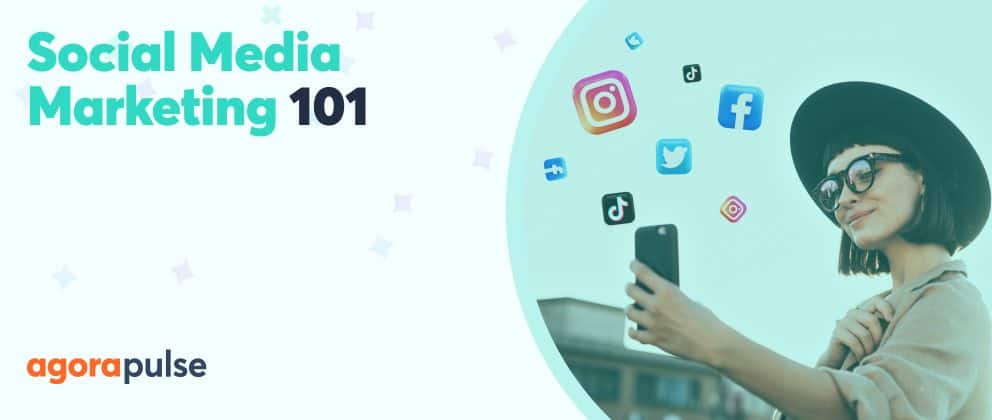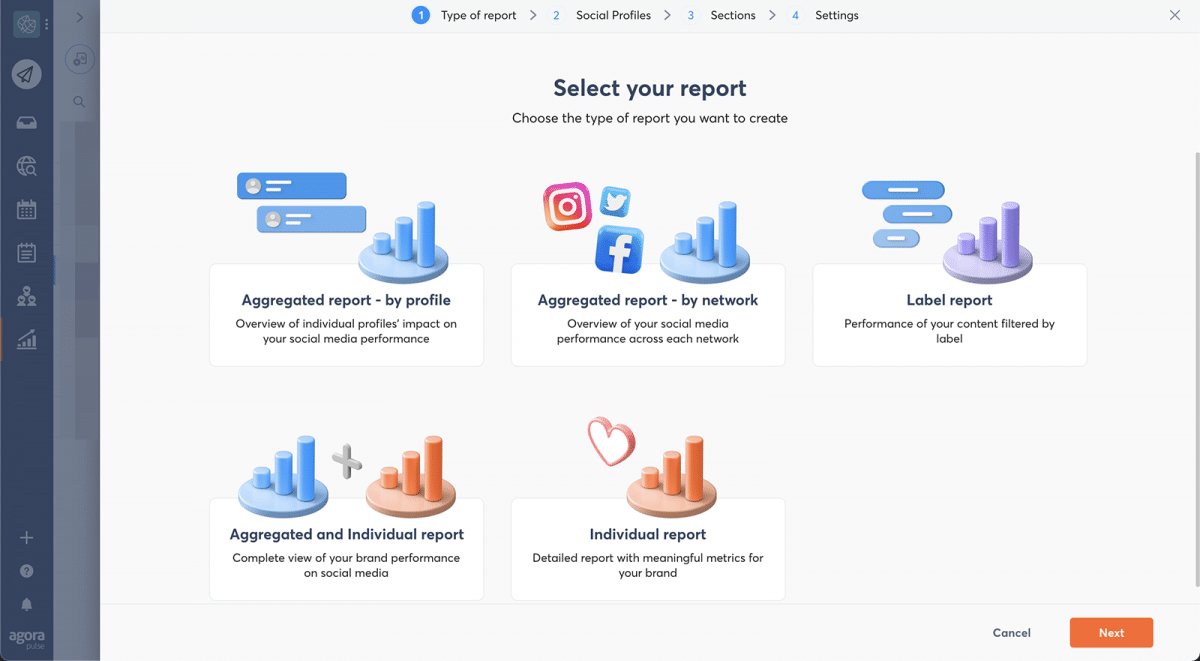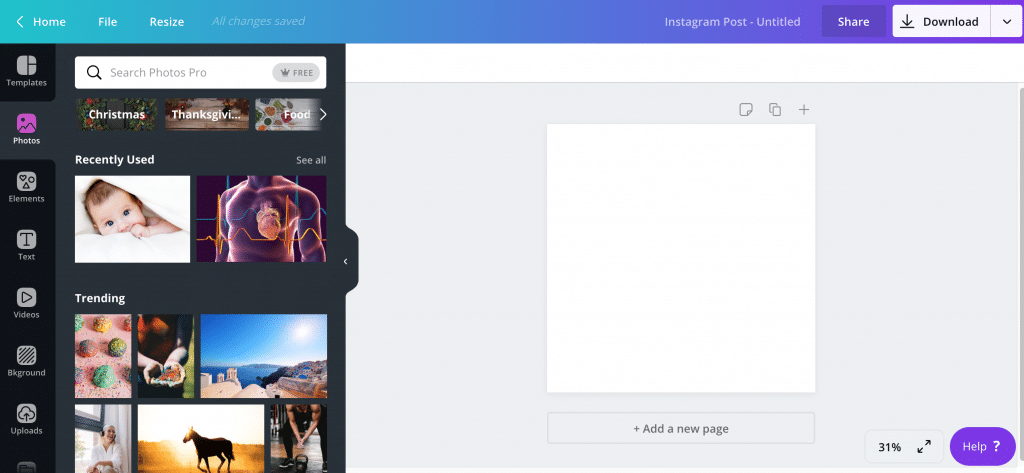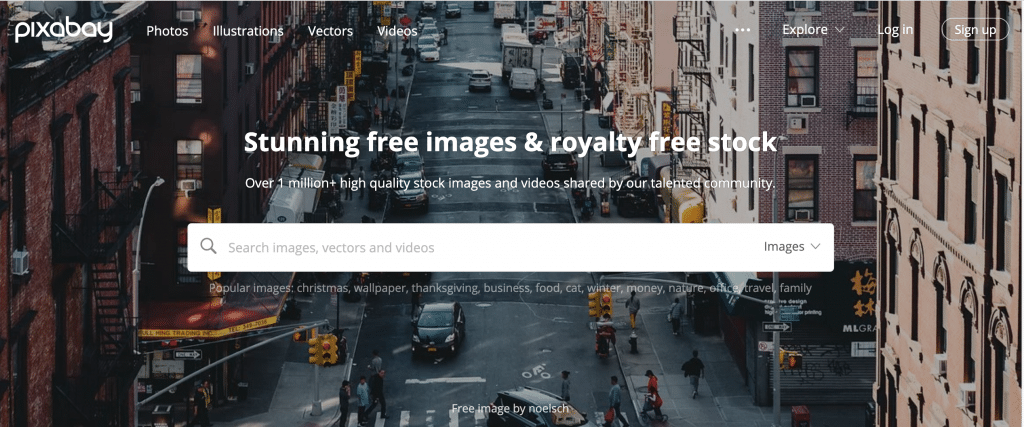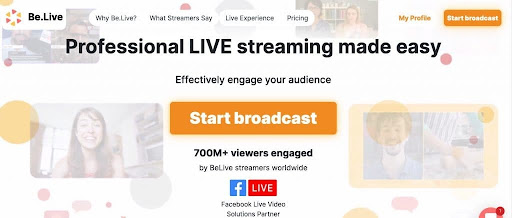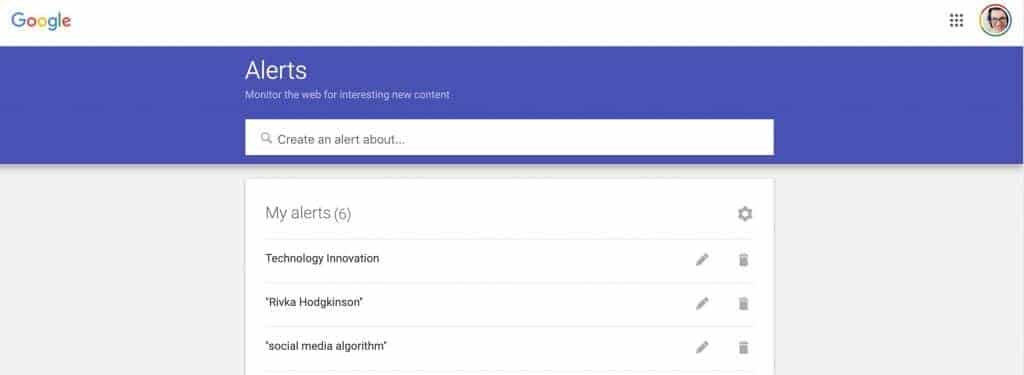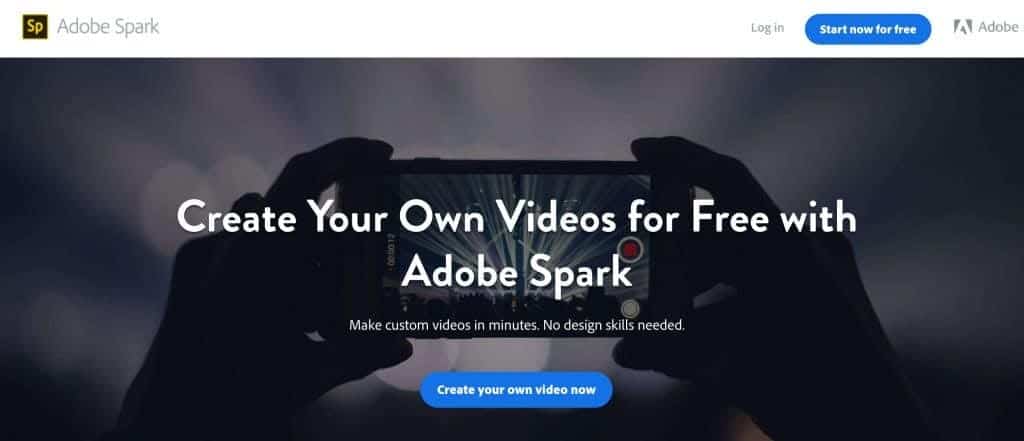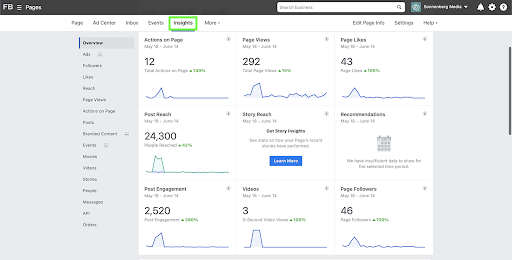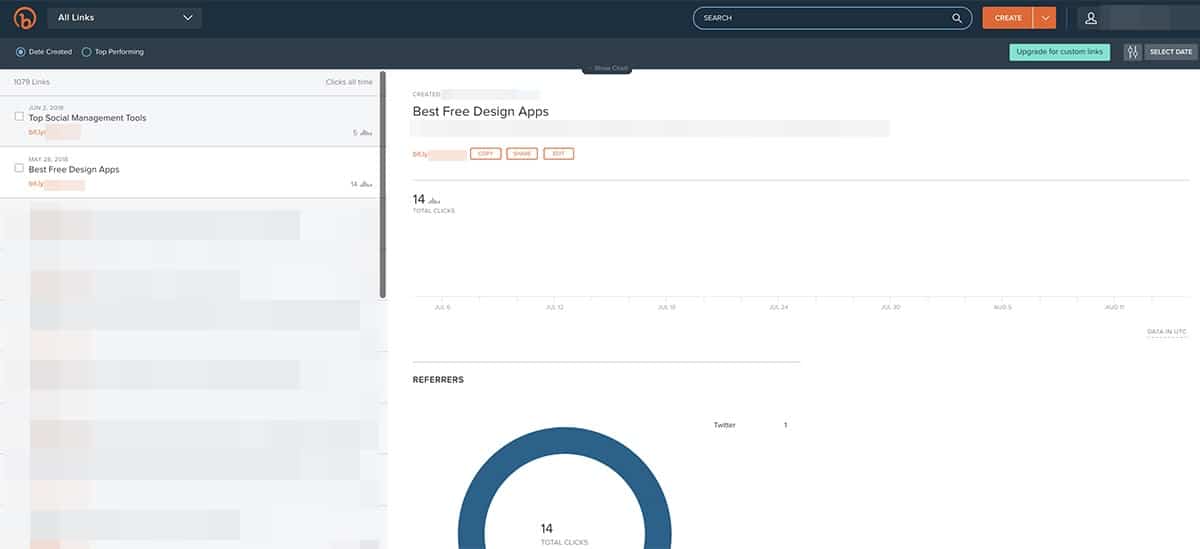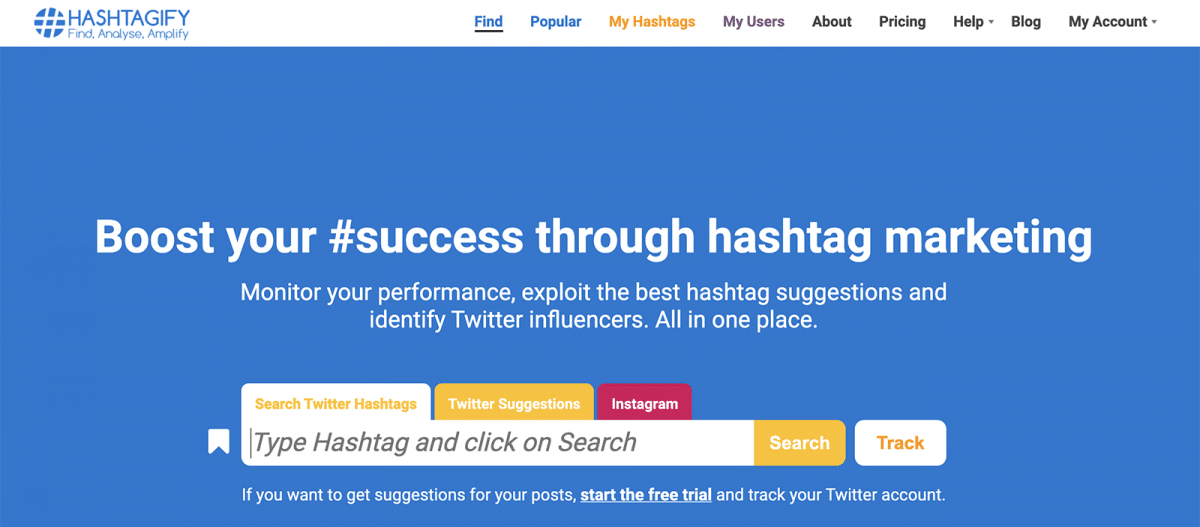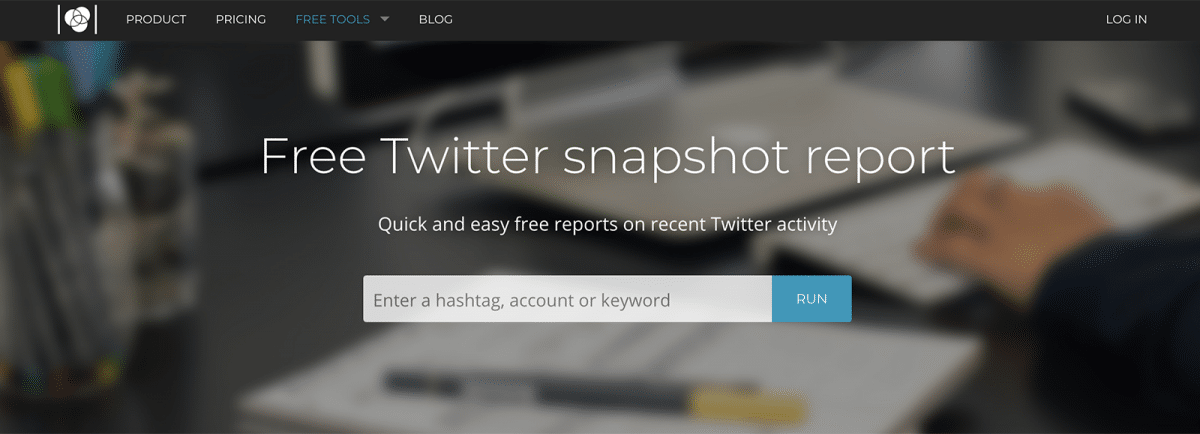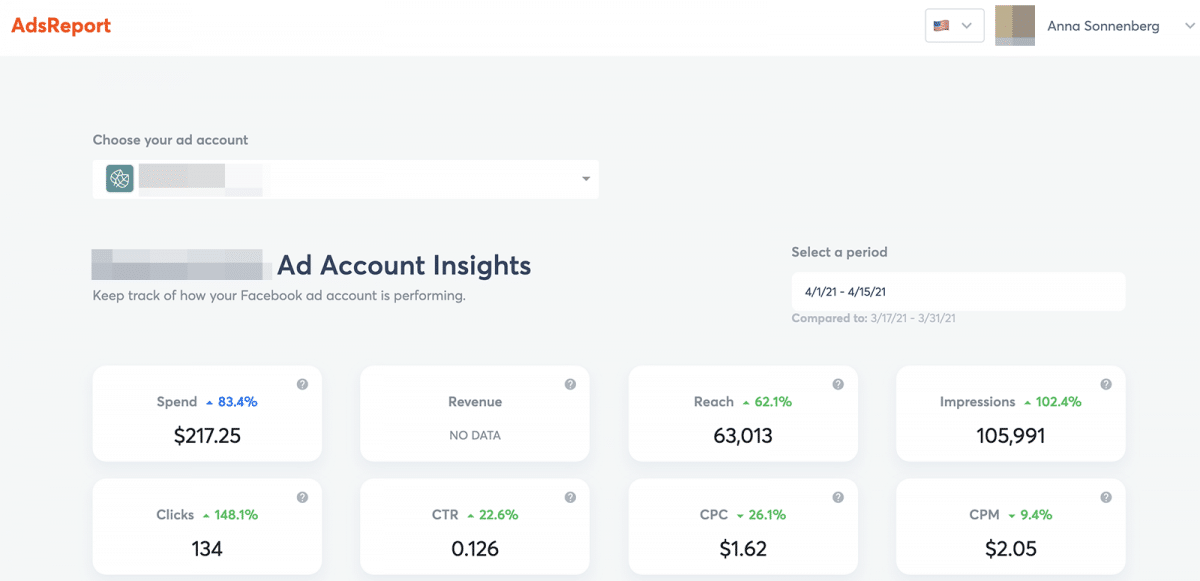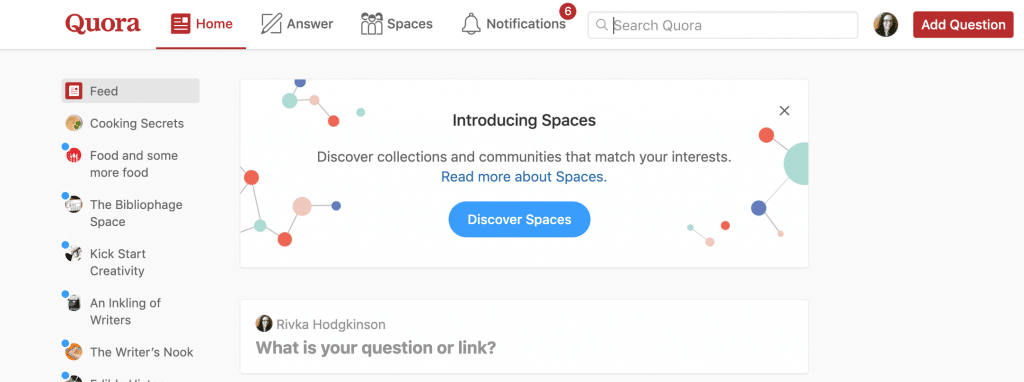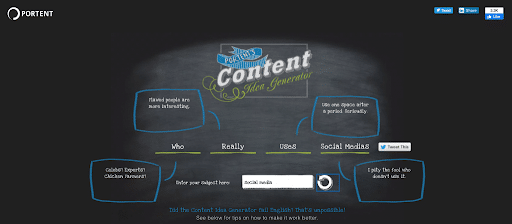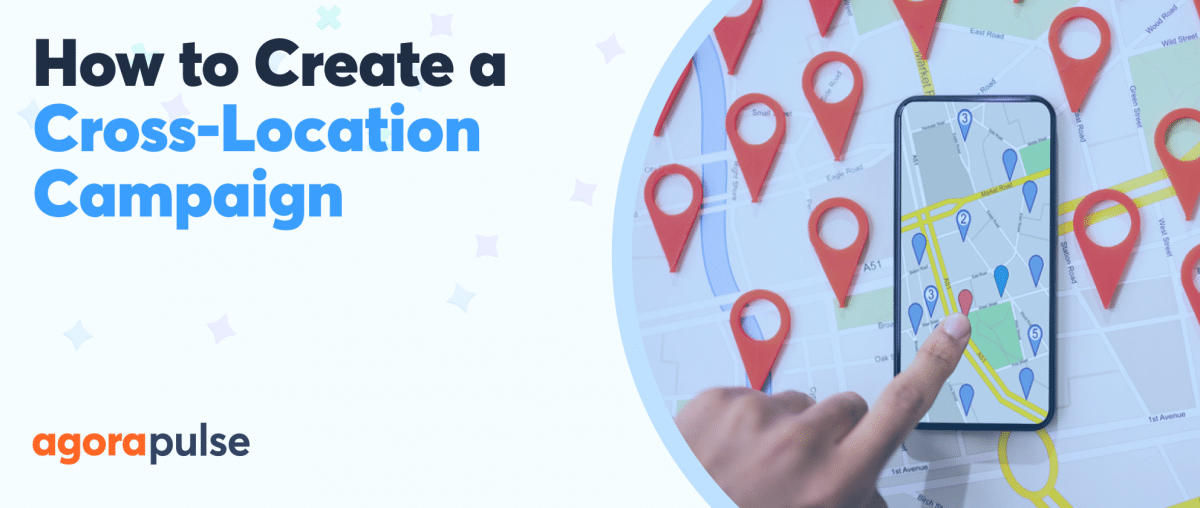Social media marketing involves using social media channels to promote a business by building an audience, engaging customers, generating leads, and driving sales.
But how can your team successfully market your brand via social media?
In this complete social media marketing guide, we’ll look at everything you need to promote your brand effectively on social media, from creating a strategy and performing an audit to incorporating paid social media and finding the right analytics tools.
We’ll also take a look at aspects of social media marketing that even experienced social media managers and agencies may overlook–such as productivity hacks and resources.
With constant changes in the world of social media marketing, you might need a refresher—especially as the social media landscape continues to expand.
“As the number of social network users continues to soar and consumer shopping behavior is increasingly impacted by the likes of Instagram and TikTok, marketers vividly leverage these networks’ drawing power for promotion. In 2023, social media ad spend stood at approximately 270 billion U.S. dollars, with the expenditure expected to surpass the 300-billion-dollar mark by 2024.” (Statista)
Ready to get started with social media marketing? (You can sign up now for a free trial of Agorapulse and get started right away.)
Let’s jump right in.
Benefits of a Social Media Roadmap
Successful social media marketing starts with a strategy or a roadmap that helps you determine where you want to go and how to get there.
Social media strategies offer important benefits, including:
- Direction so all the social media content you post and actions you take have a clear purpose
- A basis for benchmarking and reporting on results
- Ability to develop complex, highly structured campaigns
- Enabling your team to work efficiently so you won’t waste time
With a social media strategy, your team can focus on a carefully crafted plan rather than arbitrarily try tactics.
As Jay Baer, founder of Convince & Convert, explains:
“The best social media strategic plans are tool-agnostic and set forth objectives and metrics that supersede any particular social venue.”
Social Media Marketing 101: Set Realistic Goals
1. Set your social media goals
Do you know why you are using social media?
Everyone would like more fans and followers, but not every business is reaching the same primary goal on social media.
Having a deep understanding of your social media goal will improve every other decision moving forward.
Let’s look at some of the most common social media goals.
Social media goal example: Increase brand awareness
Does your team want to spread the word about your brand? Building brand awareness requires creating a consistent style, creating a loyal community, and developing a multi-channel social media strategy.
Here are some tips for building a strong social media presence on your brand’s channels:
- Establish a coherent style and an easily identifiable theme.
- Use hashtags, and create a branded hashtag.
- Forge partnerships with influencers and other brands.
- Do your keyword research.
- Develop content that aligns with your brand’s unique selling proposition (USP).
- Use graphic and editing styles that subscribers can easily recognize.
- Create a consistent publishing schedule.
- Encourage employees to share content.
- Add variety to your content mix.
- Schedule time for daily Twitter activity.
- Participate in Twitter chats.
- Tweet content that provides real value.
Social media goal example: Generate leads and sales
Do you want to connect with more prospective customers or drive revenue for your business?
With a smart strategy, your team can generate leads at every stage of the buyer’s journey:
- Awareness. Otherwise known as Marketing Qualified Leads (MQLs), these prospects are just getting to know your brand. You can encourage them to subscribe by publishing engaging, informative social media content.
- Interest. Also known as Sales Qualified Leads (SQLs), these prospects are starting to think seriously about finding a solution for their problem. You can engage them with specific information about your brand and products or comparisons to competitors.
- Conversion. Otherwise known as Product Qualified Leads (PQLs), these prospects are ready to make a decision. You can help them take the final step by offering free trials or discounts on products and services.
Social media goal example: Boost customer engagement
When your team keeps customers engaged, you can keep your brand top-of-mind with customers. Keep a few social media tips from psychology in mind to boost customer engagement.
Write persuasive content that resonates with your target audience, and establish your brand as an authority in the space.
Encourage your audience to follow your brand on every platform to increase the frequency at which they’ll encounter your content.
So, what’s a good engagement rate?
It depends on the social platform, your brand’s industry, and your following size. For example, on average, Instagram engagement rates are 1.22%. If yours is much lower, you can improve it by posting at the right times, using hashtags, and interacting with other accounts.
Although managing customer engagement might sound time-consuming, it doesn’t necessarily have to be.
You can streamline social media engagement by:
- Creating saved replies to respond to standard comments
- Automating inbox moderation to eliminate spam
- Assigning important inbox items to team members for follow-up
Social media goal example: Drive traffic to your website
No matter how important social media is to your marketing and business goals, it’s not the only channel where you want customers to engage with your brand.
Instead, social media is a key part of your marketing funnel, including your company’s website.
Your website is where customers can access product descriptions, sign up for your email list, and make purchases.
Your team can share blog posts, post product links, or publish free trial links on your social channels to drive traffic to your website.
SMART Goals
Once you decide the ultimate goal, you need to narrow it down.
One way to do this is to set SMART Goals.
Here’s how to make your goals SMART:
- Specific. Skip the vague suggestions, and clarify exactly what you want to accomplish and why.
- Measurable. Aim for a goal you can quantify, such as several followers, an engagement rate percentage, or an amount of revenue.
- Attainable. Ensure that your objective is possible to reach given the resources you have.
- Relevant. Double-check that your social media goal relates to your team’s marketing and business objectives.
- Time-Based. Give your team a specific deadline, so you’ll know how to plan and allot resources.
Take some time to understand the different primary goals of social media and which one is most important to you.
Keep account of how much your social media budget is going to be and what is possible for your agency.
2. Establish your most important KPIs
Once you have the primary goal figured out, set realistic and measurable outcomes. By setting key performance indicators (KPIs), your team can track progress as you approach your social media goals.
Depending on your deadline and the overall time frame, you might set weekly, monthly, quarterly, or annual KPIs.
A great way to decide on KPIs is to use your past results as benchmarks.
Here are some common KPIs to get your team started:
- Reach. How many individual people can your team connect with on social media? You can aim for a certain number–such as 25,000–or strive to increase your reach by a certain percentage every reporting period.
- Clicks. If you want to drive traffic to your website, clicks count. Use your website analytics to determine your conversion rate, and calculate how many clicks you need to get the sales or subscriptions you want.
- Engagement. From likes and shares to comments and direct messages (DMs), engagement can help you gauge interest levels. Your team can set an overall engagement KPI or strive for a certain engagement rate.
- Hashtag performance. How many people used your branded or campaign hashtag? You can aim for a certain number of hashtag interactions to help you quantify brand awareness or campaign success.
- Organic and paid likes. If you’re planning paid and organic campaigns, track the two types of results separately. Set separate KPIs for organic and paid likes to make sure you balance the two approaches appropriately.
- Sentiment. How do customers feel about your brand? Track positive and negative sentiments, so you can monitor your audience’s overall feeling about your brand, offerings, or campaign.
- Followers. Do you want to increase your brand’s following? Set goals to acquire a certain number of new followers every reporting period to ensure a healthy growth rate.
- Impressions. How many times has your brand’s content appeared on people’s timelines? Similar to reach, you can aim for a certain number of impressions or a percentage increase.
- Video views. Are your followers consuming your brand’s video content? Aim for a certain number of video views each reporting period to ensure that your video content is worth the investment.
- Profile visits. Do you want followers to check out your profile and learn more about your brand? Monitoring profile visits can help you gauge interest and brand awareness.
- Mentions. Are people talking about your brand on social media? Set a goal to achieve a certain number of mentions or tags so you can feel confident that your team is generating buzz about your brand.
- Shares. Have your followers been reposting or retweeting your content? Aim to reach a certain number of shares so you can track how willing your audience is to talk about your brand with their followers.
Social Media Marketing: Know Your Audience
To connect with your audience effectively, you have to get to know them. Who are they, what topics interest them, and what type of content resonates with them?
With Agorapulse analytics, it’s easier to learn about your audience.
Audience demographics
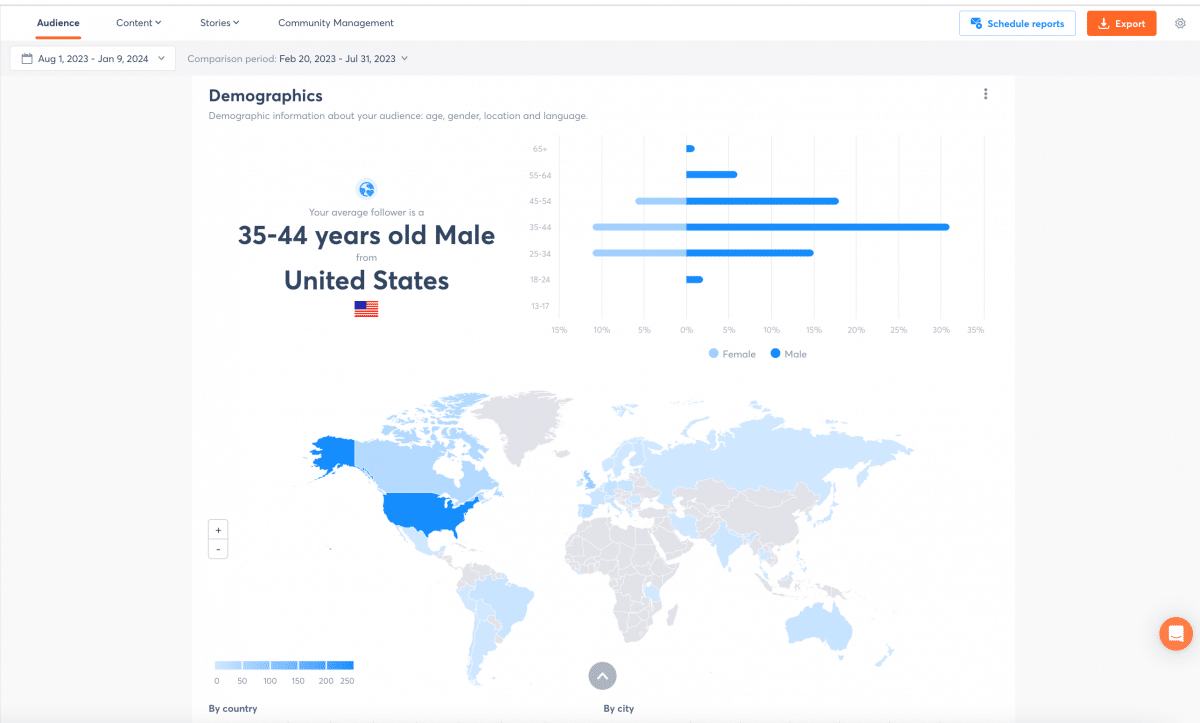
demographic of a social media audience
Is your audience mostly local? How old are they? What job titles do they have?
Agorapulse provides platform-specific audience demographics so you know exactly who’s following your brand and how to build a relationship with them.
Best times to post
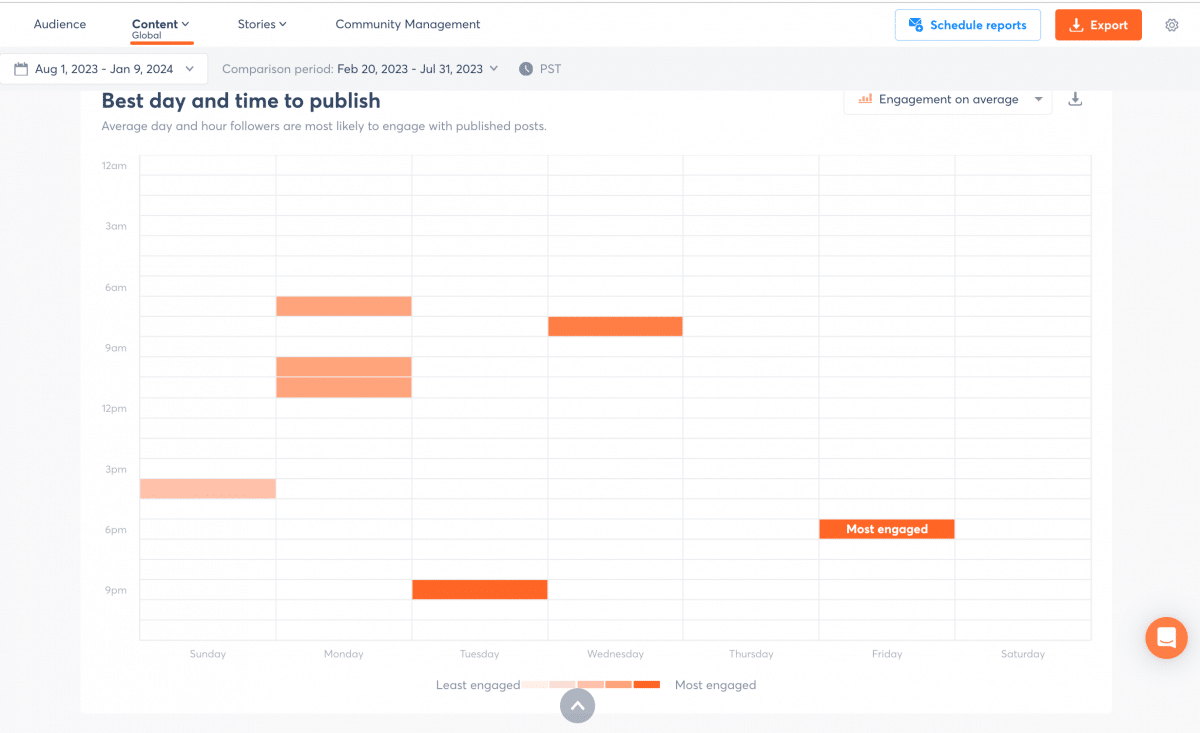
Best time to post on social media channels
Is your audience most active during work hours? Are they more likely to engage in the evenings or on weekends?
Agorapulse determines the best times to post based on audience activity.
Content preferences
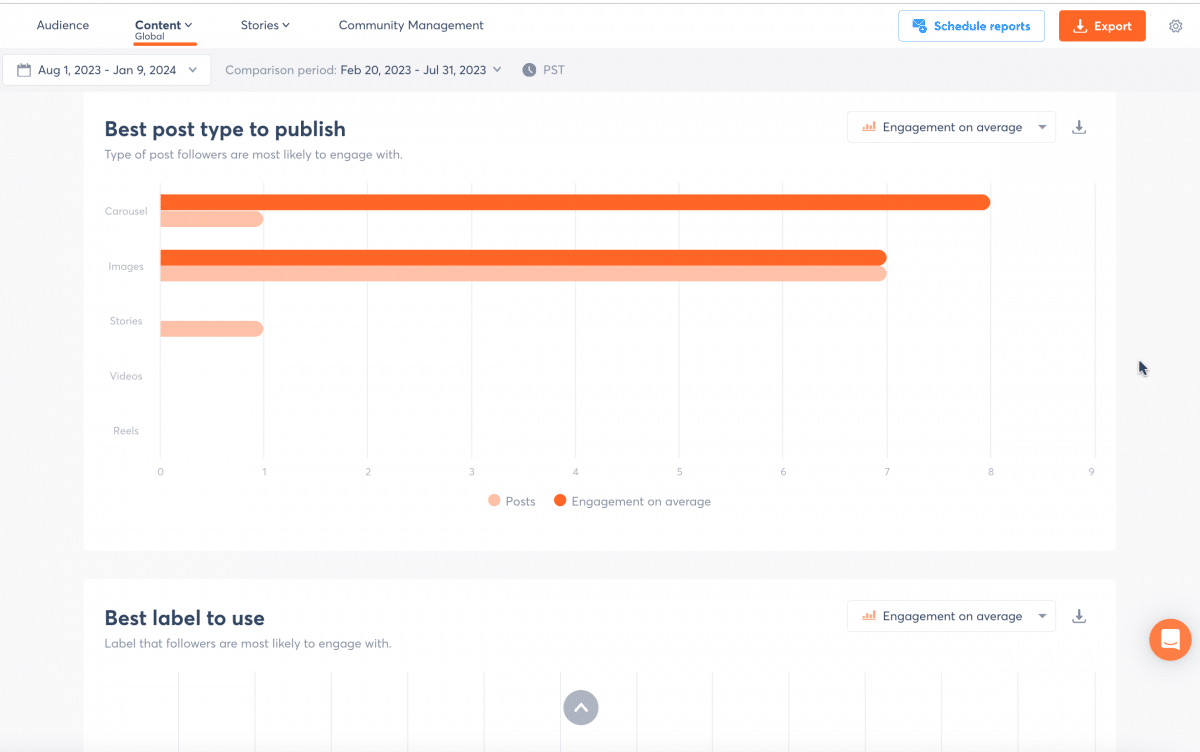
best type of content to publish
Does your audience prefer watching videos over clicking links? Would they rather read a text post instead?
Agorapulse calculates engagement for videos, photos, links, and status updates so you know the best type of content to post.
Do competitive analysis
It’s just as important to know what your competitors are doing. What are they talking about, and how is their audience reacting? Have they launched particularly successful or innovative campaigns?
First, make a list of your brand’s top five competitors and their social media handles. Scroll through their social media profiles to get a sense of what’s working best for your competitors. Then rely on Agorapulse for competitive analysis.
Social Media Marketing 101: Conduct a Social Media Audit
As you fine-tune your social media marketing strategy, do a social media audit.
A social media audit can show you what’s working and what isn’t, and it can also help you identify opportunities to reach your goals more effectively.
Here’s how to conduct a social media audit:
- Check current metrics for your social channels. What’s your typical reach, engagement rate, or the number of clicks?
- Review your best and worst content. What’s performing well and why? What’s missing the mark?
- Compare the results to your team’s goals. Did you reach them, exceed them, or fall short? How can you improve your results next time?
Choose your social media platforms
You may be tempted to be on all social media platforms. The more places you are the better, right?
Not quite.
Usually, the person saying that doesn’t realize how many social media platforms exist! For example, are you familiar with VIBER, LINE, or Telegram? They all have similar user numbers to the more widely known Pinterest. Should you use Pinterest or Instagram? Both? Neither?
Rather than try to be on every platform, figure out which one is the best fit for you and your business. It’s better to do a great job on specific social media platforms than spread yourself too thin and not be effective anywhere.
Consider:
- Time. Plan to spend at least 15 minutes per day per platform (more if you are a bigger brand).
- Your clients. Based on their demographics, which social media platforms are they using? Where are they?
- Content. Where is your content the best fit for the online culture?
- Skill/training. Which social media platforms do you know how to use effectively?
Regularly look into the demographics of who uses social media. This review is a great resource to better understand the nuances of the major social media platforms.
And don’t be afraid to ask your customers what they use. You might discover a new social media opportunity that you never knew existed.
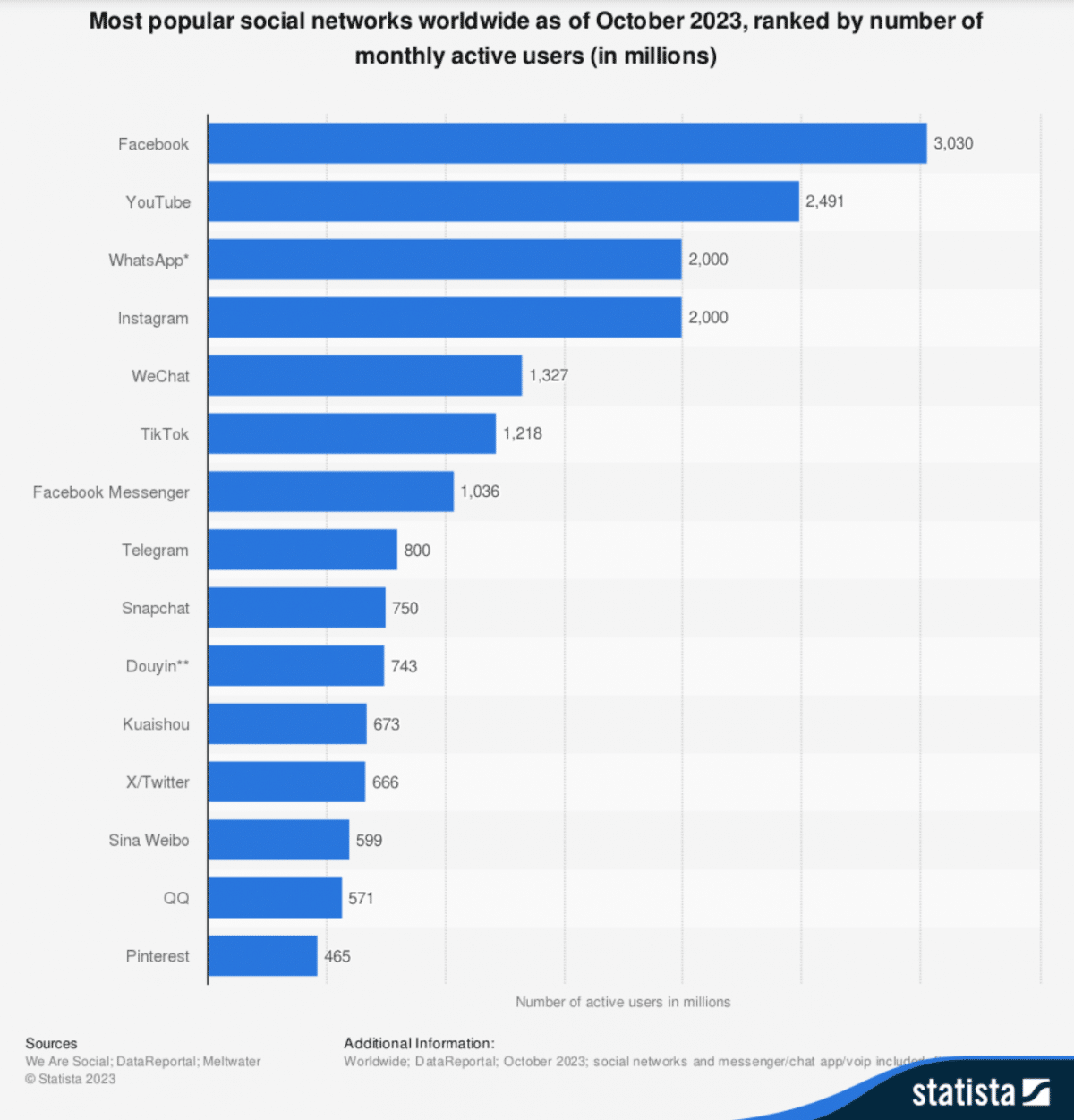
The world’s most popular social media platforms, according to Statista
Have your social media presence in order
Has your team developed a consistent, recognizable social media presence that is unique to your brand?
Here’s how.
- Optimize social media profiles. Check each of your social media profiles to make sure your brand’s bio is consistent and your URLs are up to date. Then make sure you’re leveraging all the available tools. For example, you can set up a shop on Instagram or allow customers to book appointments on Facebook.
- Do shout-outs to customers. One of the best ways to encourage loyalty is to give your best customers a moment in the spotlight. Share customer reviews or give a shout-out to your top clients–and if you’re lucky, other followers will model their behavior.
- Have a consistent brand image. Followers can recognize your brand more easily when you use the same logo, colors, fonts, and messaging. While that doesn’t mean all your social media posts should be identical, it does mean that consistency can help your audience get to know your brand.
- Promote UGC. In some cases, user-generated content can do a better job of promoting your brand than your team’s marketing content can. After all, customers often view UGC as more authentic and trustworthy. Leverage some of its power by sharing high-quality UGC on your social channels – and give credit to the creator.
Social Media Marketing 101: Develop a Brand Voice
What is a social media voice? It is the tone of your communication.
We naturally switch “voice” in public settings whether on social media or in our personal life. For example, we all understand some topics of conversation are appropriate for a family dinner and others are not appropriate for a corporate board meeting.
In business, having a consistent voice lends credibility to your posts and helps people feel more connected to the brand. (After social media is about making connections, not about disconnecting from fans and followers.)
When you post on your social media, voice is much easier to capture. But often when you create social media content as a business or as part of an agency, a consistent brand voice can be more challenging. That may be because multiple team members are often sharing the job of social media content creation.
Consider a variety of things when you craft your social media presence:
- Types of language that are acceptable (including slang)
- Level of formal vs. informal communication
- If and how emojis will be used
- How to respond to negative posts or events
- Whether to use singular or plural pronouns
Consistency is a key component of any platform for social media marketing.
You must know what logo to use, in what contexts, and brand colors.
The brand colors
- Fonts used for corporate branding
- Policies around image use and what image assets are available
Take the time to write your social media policy and guidelines and share them with your organization.
You’ll also want to consider different scenarios and how your organization will handle social media during a crisis. (After all, that’s when social media managers are desperately needed.)
Doing so will make communication between your team easier and help prevent issues from coming up later.
Related post: Social Media Management 101
Social Media Marketing 101: Create and Curate Social Content
Once you’ve honed your social media voice, you’ll be ready to develop content for your channels. Incorporate both content creation and content curation into your social media calendar.
Here’s the difference:
- Creation means producing original content, such as shooting videos and designing infographics.
- Curation means sharing content by other brands or creators that resonates with your audience and builds relationships with other figures in your brand’s community.
Dig deeper into the difference between content creation and curation.
Content themes
Start by mapping out topics that are relevant to your brand and your audience’s interests.
For example, if you do social media marketing for a restaurant, your content themes might be:
- Weekly specials
- New dishes
- Seasonal ingredients
- Staff introductions
- Local news, such as reviews of the restaurant
- Spotlights on local businesses, such as farmers’ markets or sister restaurants
Stories
On their own, individual posts and photos might not be enough to convey complex ideas.
When you stitch them together into Stories, your team can create ephemeral content that connects more effectively with your target audience.
Short-form video
Longer videos often require extensive scriptwriting, set design, and even casting.
In contrast, short-form video lets you capture your audience’s attention while allowing for more creativity.
Your team can create short-form videos to educate and entertain customers across social media channels.
Images
Images can say so much about your brand and engage your audience in countless ways. Your team can create product photos, branded graphics, or behind-the-scenes shots of your team. You might also curate stock images, influencer photos, or UGC.
Infographics
Raw data doesn’t always translate well to social media posts, but infographics can make it more visually appealing and easier to understand.
Your team can create infographics exploring the data you’ve gathered or curate infographics exploring industry trends.
How-to guides
Customers who are considering your brand or products often seek help with making a decision. Your team can create how-to guides to help them understand how your products work, how to maximize their value, and how they outperform competitors.
For example, a marketing team for a software platform might create a how-to guide showcasing the latest features or curate how-to guides to choosing the right software solution.
Try Agorapulse now for FREE!
Top-performing content
Once you start to track your results, your team won’t necessarily have to guess what to create or curate. Instead, you can check your social media dashboard to see which topics and what types of content tend to perform best. Then you can produce more of what works best.
Mix up your content
Create a variety of different types of content, including:
- User-generated content
- Image posts (check out resources for this later in this article)
- Videos (both live and prerecorded
- Text-based posts
- Twitter polls and questions
Some content you will be able to use on multiple social media platforms. (You can also harness the power of influencers to share your content as well. If that sounds daunting, we’ve got tips on how to find influencers with ease.)
However, you will get the best results if you consider the unique options of each social media platform. For example, you have several options for publishing your videos on Facebook that you won’t have on Instagram or Twitter.
Social Media Marketing 101: Create a Social Media Calendar
Now that you’ve got plenty of ideas for content creation and curation, you might be ready to start posting. Rather than publishing content haphazardly, however, it’s important to create a social media calendar. With a social media calendar, your team can:
- Publish content consistently, at a frequency that works well for your audience.
- Post content at the times when your audience is most likely to engage.
- Carve out time for time-sensitive promotions.
- Space out various content topics to keep your audience engaged.
- Share it with stakeholders or clients so everyone knows what’s happening.
Need some ideas to get you started in social media marketing? Let these posts inspire you:
- 4 Inspiring Tips and Examples for Your Non-Profit’s Social Media Marketing
- 7 Instagram Content Ideas for Creatively Blocked Social Media Managers
- Good Things to Post on Instagram (Besides Your Coffee Art)
- Your Content Recipe for YouTube Videos Your Audience Will Love
- Grab Some Inspiration for Your Fall Social Media Content Calendar
Paid Social Media Marketing
Although much of your social media marketing strategy might focus on organic content, it’s also important to consider how paid social factors are in your plan.
Social advertising
Every social media channel offers advertising opportunities, and you can use them to design campaigns that target people at each stage of the buyer’s journey.
You can create:
- Awareness campaigns to introduce your brand to a larger audience
- Consideration campaigns to increase interest and engagement
- Conversion campaigns to encourage a subscription or sale
Each social platform also provides numerous ways to reach your audience. You can target:
- People who match your ideal audience demographics and interests
- Current followers, prospects, or subscribers
- People who have characteristics similar to your customers
Facebook Ads
You can advertise your brand with Facebook Ads starting at just $1 per day.
When you use the Facebook Ads platform, you can place content on Facebook and Instagram as well as on websites in Facebook’s Audience Network. That way you can reach your audience in their newsfeeds, in Messenger, and on their favorite websites.
Twitter Ads
With Twitter Ads, you can connect with your audience on their timelines or in the Explore tab. You can promote anything from live video to branded hashtags, and you can also pair your ads with premium video content.
Like Facebook, Twitter has powerful remarketing capabilities so you can make a bigger impact on potential customers.
Assess What’s Working and What’s Not With Your Social Media Marketing
Once you implement your social media strategy, you need to know what’s working and what isn’t. After all, reaching your goals means doing more of what works and less of what doesn’t.
Agorapulse Analytics
With Agorapulse analytics, you can see how your social media content is performing and how your audience is growing during any time frame.
You can track social media metrics like:
- Audience growth
- Reach and impressions
- Engagement per post
- Brand awareness
- Customer sentiment
Agorapulse analytics also provides recommendations for improving your results. You can see when to post, what type of content to post, and which topics or labels resonate.
Agorapulse Reports
Whether you want to share social media reports with your team, your stakeholders, or your clients, you can accomplish it with Agorapulse.
You can create custom reports that provide general overviews or detailed results. You can also combine multiple social profiles into one report for easier review.
Then you can export or email reports in visually appealing PDF or PPT formats.
If you want to get the same report every week or month, you can schedule the report to generate automatically.
Create Social Media Reports That People Will Actually Read (and Like)
Retest and reevaluate
Once you identify what’s helping you reach your goals more effectively, do more of it.
That means:
- Focusing more on the type of content (i.e. video) that your audience likes best.
- Writing more of the social media captions that generate the most engagement.
- Posting more consistently at the optimal time for your audience.
- Creating more of the ads that drive the most clicks and conversions.
Continue to monitor your brand’s social media metrics. Compare performance from week to week or month to month to gauge improvement. Keep striving to find what works for your audience, and don’t hesitate to experiment with new content types or publishing times.
Free Tools to Make Social Media Marketing Easier
Social media can be time-consuming. Fortunately, many tools can help make it easier, from sites to get free social media images to tools for video creation. Learning which tools are best for you and how to use them is well worth the effort.
Start by getting the essentials—graphics, content creation, and hashtags—covered.
Graphics and social media tools
Creating your own branded graphics will help set you apart on social media and ensure you are not inadvertently breaking any copyright laws.
Doing this can seem intimidating for those without a graphic design degree.
Here are three of the top resources that I use most frequently.
Canva is a powerhouse tool. It has a free version, or upgrade to its paid plan for even more flexibility.
It features correctly sized templates for social media graphics, access to free photos, text, and graphic elements, and easy editing. This is the tool I rely on the most for social media content creation. It also scales well, including team and sharing functions.
Need an image? Don’t do a Google image search. Many of those images are subject to copyright.
Instead, find what you need on Pixabay. You might have to get creative with your searches from time to time, but you can usually find an appropriate image for your social media post.
Pixabay is also integrated with Canva, so you can pull the images directly into your designs.
If you are still looking for that perfect image for your post, check out Unsplash.
One of the nice features of this site (in addition to creative images) is the ability to pull pictures into collections that you can come back to later. It works well when you want to look at several options before you make a final decision or when you seek related or stylistically similar images for a project.
Content tools for creating social media posts
Be.Live
If you have been paying attention, you will notice that LIVE video is all the rage on social media right now.
The best feature is the ability to do a video with people in other locations at the same time. You can get a lot out of the free version, or upgrade to add your branding and have more features available to you.
Do you want to be able to share the latest news about subjects that are important to your audience? Google Alerts makes it easy to stay on top of what is new. You can set up searches and choose whether to receive them in a digest once a day or as they happen.
Some good ideas for Google Alerts to receive are …
- Your business name
- Subjects your audience is interested in
- News about your top competitors
- Your product or service name(s)
Set-up only takes about 5 minutes. Once it is set up, all the new content will come straight to your email, so you can easily turn it into social media content.
Video is an important part of your social media content, and almost everyone can benefit from using video. However, not everyone feels comfortable going LIVE on their social media accounts.
There are many paid tools available for video, but if you want to start without having to get approval from your boss to spend money, give Adobe Spark a try. It is free and intuitive to use to start creating social media videos.
Analytics tools to measure your social media results
Analytics is like the body language of social media. It shows you how people are responding to your content, so you can adjust and improve to reach your goals.
Though most professional social media managers will want to invest in a full-featured reporting tool, you can start with some simple free tools to start collecting the data you need.
Built-in Platform Analytics
All the major social media platforms have their analytics built into the platform as long as you use the correct type of account.
For Facebook, log into your business page, and then select “Insights.” You will be able to see page views, reach, what actions were taken on the page, video views, and many other things.
You can only view statistics from the past 28 days, so make sure you export the data that you need regularly.
Like Facebook, Instagram requires you to have a business account to view analytical data. You can also only view this information from the mobile view, not on your desktop.
If you need to switch to an Instagram business account, this is easy to do. However, you will only get data from the date that you switched and not before.
Twitter, on the other hand, does not differentiate between business and personal accounts. Instead, once you are logged into your account go to analytics.twitter.com to view statics like reach, top Tweet, and impressions. This will only measure actions directly related to your account, not any hashtag activity. You will need to use another tool for that.
Bitly
Another important thing you might want to track is what happens after your audience sees you on social media. Where are they clicking on your links? Bitly is a perfect tool for this.
You can create a unique link for each of your social media platforms, or even for specific posts or campaigns. The Bitly dashboard will let you track exactly how many people click through on that link so you can see which posts and/or platforms are being most effective at driving traffic to your goal.
Why third-party analytics tools outperform native tools
At first, using native tools like Twitter Analytics or Facebook Page Insights might seem more convenient. After all, they’re built into your brand’s social channels, so you don’t have to go far to access them.
But as your team hits its stride with social media marketing, you’ll find that these tools aren’t as handy as you thought–and they’re not particularly insightful either.
Instead, a third-party tool like Agorapulse outperforms native analytics by:
- Exporting reports in multiple formats. If you export native analytics, you don’t get much of a choice. You might be able to choose between CSV or XLSX–but that’s it. With Agorapulse, you can select a PDF that’s ready to share or a PowerPoint that you can edit or present.
- Providing shareable charts and graphs. Native analytics might look nice in the app, but exporting them only results in raw data. That means you’ll need to transform the data into visual elements yourself. In contrast, Agorapulse lets you export and share charts and graphs with your team or clients.
- Allowing complete customization. With native analytics, you can’t usually modify reports to meet your team’s or client’s needs. If you use Agorapulse, you can customize reports to show more or less detail or even combine multiple social media channels.
- Scheduling automated reports. If you rely on native analytics, you’ll have to export and share reports manually every time. With Agorapulse, you can schedule weekly or monthly reports to save your team time.
Tools to find social media hashtags
Are you feeling confused about how to use hashtags on social media, especially Instagram? Should you use the most popular hashtags or ones more specific to your brand?
These tools can help you find some hashtags to try on your social media platforms.
Do you want to see how your branded hashtag is being used on Twitter? Or get ideas for other similar hashtags?
Hashtagify does both. It can also show you the usage of a hashtag over time, who the top accounts are that are using that hashtag, and more. You can get a good surface-level view with the free version, or get the paid version for deeper insights.
Tweetreach is another tool that will let you analyze Twitter hashtags. Its free report shows the total reach as well as the total impressions. You can also see which accounts are using the hashtag, and which Tweets are getting the most reTweets. It can also be used as a great way to find influencers on a topic.
When you use Instagram on your mobile device, you can start typing a hashtag, and Instagram will give you a list of auto-complete options and the number of posts with that hashtag.
Ingramer takes that to the next level.
Enter a keyword, and it will show you several related keywords and how often they are used. One of the things I love about this tool is that it gives both related hashtags and other suggested hashtags for the same niche. You can easily click on them to make your own copy and paste list.
Resources for Social Media Success
The one thing you can know about social media is that it is always changing. Staying up to date and getting new ideas are constant efforts when you are a social media manager.
The good news is that there are many resources available to help.
Social media advertising
One of the challenges of the built-in analytics for Facebook is that they can be a little overwhelming. Sometimes, social media managers find it hard to get all the metrics that you need.
Good news: Agorapulse has a helpful tool called AdsReport! This free tool shows you the results of your Facebook ads in simple and easy-to-understand charts.
You can also use Agorapulse’s Advocacy feature to help your employees share your social content and Twitter Report Card for evaluating your Twitter profile.
Content generation and updates
Quora
Sometimes all you need to come up with a new idea is a little creative kickstart. That is where Quora comes in. You can set up spaces around various topics, search for keywords, and even ask your own questions. It can help you get out of your own head and start seeing things from other people’s perspectives.
Want a more streamlined tool to start generating ideas? I love the Portent Idea Generator. You can redo it as many times as you want. Use it to create your social media posts and give you ideas for blogs and articles too. Because it is an automated tool, sometimes, it gives you some funny results. But honestly, a little humor can be a good way to get your creative wheels turning too.
Social Pros Podcast
Need help on a topic you don’t see here? Like listening to podcasts? It is worth checking out the Social Pros Podcast. They have interviewed leading experts in social media on just about any topic you can think of, and give you real-world advice and tips.
Productivity Tips and Tricks for Social Media Marketing
Now that you know more about the basics of your toolbox, the last thing is to figure out how to make the most of your time. Social media can be time-consuming and overwhelming, which is why organization and strategy are so important.
Build your social media team
The first step is to know who is responsible for what aspects of social media. People who you might want to consider including in the conversation:
- Marketing
- Customer service
- Sales
- Graphics
- Web
- Accounting
A big part of who is on your team is dependent on the size of your organization. In some cases, you might be responsible for all social media and report to the owner of the company directly. Other times, social media might be part of much bigger efforts.
Start by making a list of what you need (goal setting, graphics, content, ads, etc.) and who is responsible for each of those things.
In other words, map out a social media team structure. The key is to find a balance between using each person/team’s strengths without having too many proverbial cooks in the kitchen.
Using tools that can help control access, permissions, and customer interaction will help a lot.
And don’t forget that social media, traffic, and landing pages should work together to indicate the state of your digital presence.
Give Agorapulse a try now for FREE!
Create a content calendar
Another important time-saving strategy is to create a content calendar.
Consider:
- Ideal posting frequency
- Scheduling tools
- How to customize for each platform
- When you will update your content
- Whether to use marketing automation
Using all the tools you have for content creation, you can start creating categories of content that you will be able to keep fresh and interesting.
Schedule time into your workday to create and manage your content. And don’t worry, while some people have been concerned that using a scheduling tool will hurt your reach, there is no true evidence.
Create a schedule for your workflow
Depending on whether you are a sole proprietor, on a team, or a social media agency, you may be managing several social media accounts all at once.
I can’t say it enough: Schedule, schedule, schedule!
Schedule not just your content, but time to devote to each aspect of social media.
Here is a recommended schedule to start:
- 1-3 hours per week for content creation and scheduling
- 15-20 minutes per day per platform for responding to comments (more if your accounts are big!)
- 20-30 minutes per day per platform doing outreach and growing your accounts
- 1-2 hours per week reviewing statistics and strategy
- 1 hour per week communicating with your team
- 1-3 hours per week creating and managing your advertising
- 1 hour per week doing research and learning what is new on social media
Those numbers assume that you are a skilled social media professional able to accomplish the basics quickly.
You may need more time if:
- Accounts are already well developed and have large followings
- You are in a specialized field
- Doing a lot of video or live shows
Breaking down each type of task helps you see realistically how much time it will take.
Track your time for one week and see how long it takes you to manage social media. Where can you benefit from more time? Where is your time unproductive?
Taking the time to self-analyze is a worthwhile way to improve your results.
Manage comments and messages
Remember that social media should be a conversation. You want to encourage people to interact, and you want to reward that interaction by continuing the dialogue.
You have many tools at your disposal to make this work.
- Management tools. If you want to save time on social media, using a tool with an inbox will make a big difference!
- Block and mute. You don’t want to overuse these tools, but sometimes the best strategy is to shut down a conversation that is harmful. Just be clear that you are not avoiding dealing with an important issue.
- Saved replies. Using a tool with saved replies can save time, especially for larger companies
Make quick responses a priority, and have your team set up to facilitate good social media interactions.
What’s Next in Social Media Marketing?

* * *
Get started on saving time and energy on your social media marketing. Check out this FREE demo and see how Agorapulse can make your social media efforts easy!

